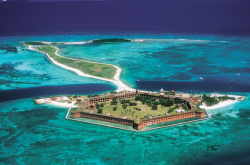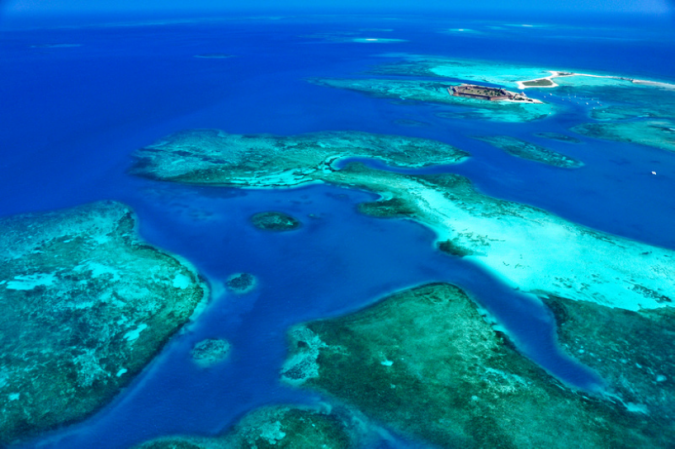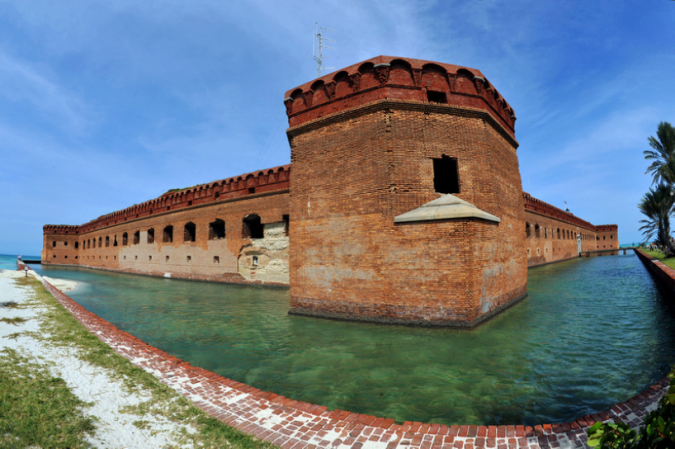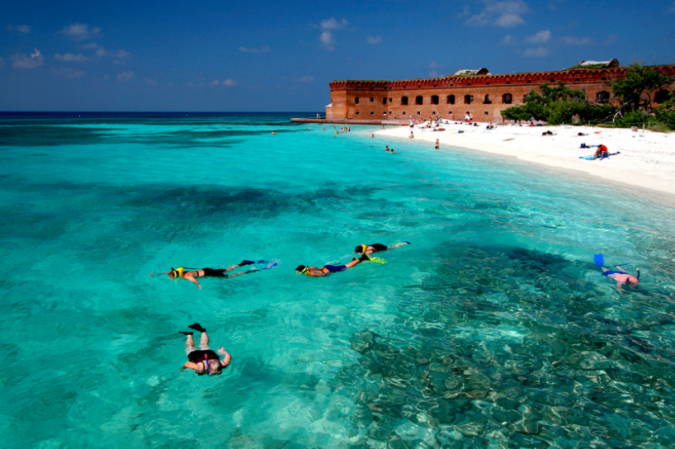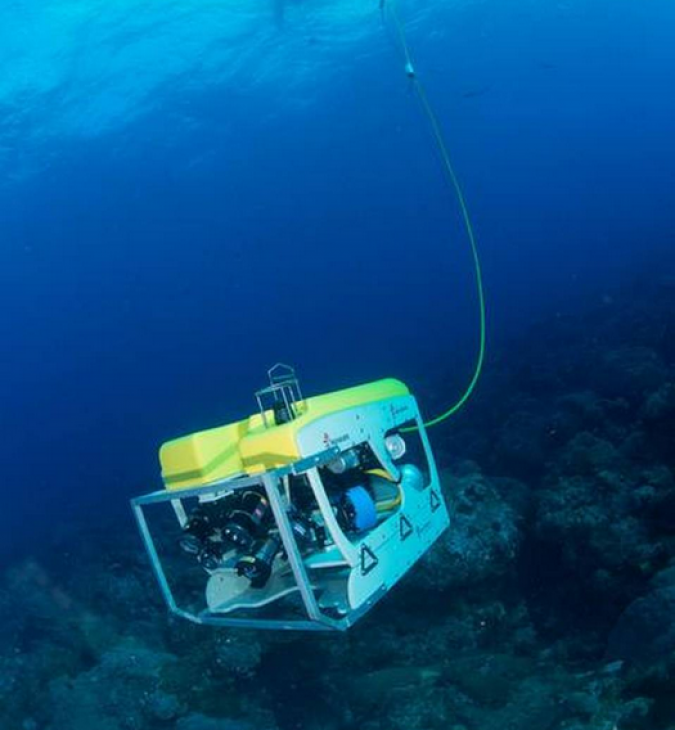A national marine treasure lays just 70 miles west of Key West. Accessible by seaplane or boat, the Dry Tortugas National Park is a treasure not to be missed on any trip to Key West. Dominating the National Park is the imposing figure of Fort Jefferson. Fort Jefferson is the largest masonry structure in the Western Hemisphere with over 16 million bricks. Fort Jefferson and the Dry Tortugas National Park lie within the Florida Keys National Marine Sanctuary, a body of land and sea that is 320 miles long and covers 9844 square kilometers.
Fort Jefferson National Monument was designated by president Franklin D. Roosevelt under the Antiquities Act on January 4, 1935. (Comprising 47,125 acres (19,071 ha)). The monument was expanded in 1983 and redesignated as Dry Tortugas National Park on October 26, 1992.
Spanish explorer Ponce de León gave the Dry Tortugas their name on his first visit in 1513. They were given the name Las Tortugas (The Turtles) due to 170 sea turtles taken on the islands and shoals by de León's men. Soon afterward, the word "Dry" was added to the name, to indicate to mariners the islands' lack of fresh water springs.
The Dry Tortugas consists of 7 tiny islands and the surrounding waters. It is one of America's most remote National Parks. The second largest island, Garden Key, is home to historic Fort Jefferson.
In 1846, U.S. Army strategists were concerned that hostile nations could disrupt shipping lanes in the Gulf of Mexico. As a result, they decided to build a 420-gun, 1,500-man fort on Garden Key. The intimidating bulk of the 45-foot-high, three-level hexagon, whose 2,000 archways run half a mile around, spared it from ever having to fire a shot.
What allowed the US Navy to control access to the Gulf of Mexico wasn't so much the fort itself, but that forward deployed warships, after patrolling the seas, could safely and securely anchor under the protection of the fort.
Construction of the fort, though never officially finished, took 30 years. Yellowish brick and lumber came from Pensacola, FL, before the Civil War. Cement and stone were shipped from 1400 miles away from central New York. Once the Civil War began, red bricks were transported from Maine. The fort was eventually abandoned in 1874, in large part because of a lack of naval threat to the Gulf areas and second, advances in gun barrel rifling had made the 8' thick walls of the fort obsolete.
The fort was a Union fort during the American Civil War. Key West was also Union territory. Imagine therefore, brick, cement and stone from Union states Maine and New York making its long journey through Confederate waters, along with food and fresh water to maintain the 1700+ soldiers and civilians that lived at the fort. Quite a feat!
Today, the Dry Tortugas and Fort Jefferson are "must see" tourist attractions, both ranking #1 on Trip Advisor. Access to the fort is by seaplane or boat.
Second, is the Florida Keys National Marine Sanctuary. Florida Keys National Marine Sanctuary is a special place, with spectacular and unique resources such as deep coral reefs, shipwrecks, seagrass beds, and fisheries that are the source of commercial and recreational activities like diving, fishing, and boating. More than 400 species of reef fish inhabit the region, including all species of grouper. Research suggests some tuna species may use the Tortugas as a spawning ground, and about 40 species of sharks pass through the region.
Conclusion
The sanctuary is a living museum. For years the waters were open to private and commercial fisherman. Since 2007 large areas of the sanctuary have been off limits to fishing of any type. In 2011, a five-year study commenced with the purpose to evaluate and scale the sanctuary as necessary to maintain the waters, corals and sealife. Use of unmanned remotely operated vehicles allow scientists to explore those areas too deep for scuba divers.
If you have any comments or questions please contact me here.
Good luck!
Additional Sources:





